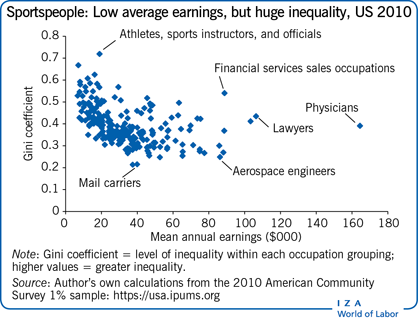Elevator pitch
Economic theory has many predictions regarding how workers should be paid and how workplaces should be organized. However, economists’ attempts to test these in the real world have been hampered by a lack of consistent information about workers’ productivity levels. Professional sports offer a potential solution, since the performance of individual sportspeople is easily observed and yet many of the same problems faced by managers in workplaces still apply. In many ways, sportspeople may be less atypical of the modern workforce than farm laborers, doctors, or other groups of workers that are often scrutinized by economists.

Key findings
Pros
Unlike most other skilled workers, it is possible to easily measure the productivity of many sportspeople.
Since the rules of sports are known, the production function of the sports team—the “firm”—is clear.
It is clear what information players have—and what incentives they face—when choosing how much effort to put in to their tasks.
In team sports, it is clear which players play together at any point in time and how they interact.
Cons
Professional sportspeople may not be representative of workers in the wider labor market.
Sportspeople and referees are scrutinized more than normal employees, which might change the way they behave.
The organization of labor markets in some professional sports is idiosyncratic and differs from the labor markets for other occupations.
Extreme levels of pay inequality exist in many professional sports compared to other occupations, due to the presence of superstars.